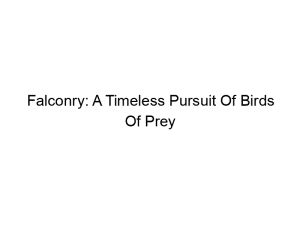Bringing a feathered friend home is a joyous occasion, but ensuring their well-being requires careful planning. Finding the right cage is crucial for your bird’s health and happiness. This guide, The Best Bird Cages: Choosing the Right Home for Your Feathered Friend, will help you navigate the world of bird cages, covering everything from size and materials to safety and enrichment. You’ll learn about different cage types, essential features, and how to create a safe and stimulating environment for your beloved companion. Let’s dive in!
A bird cage is a structured enclosure designed to house a bird safely and comfortably. It provides a secure environment, protecting your bird from predators and hazards while allowing for adequate space for movement, feeding, and resting.
The right cage is paramount for your
bird’s physical and mental health. A poorly chosen cage can lead to stress, injury, feather plucking, and even illness. The cage size, materials, and design directly impact your bird’s quality of life.
Key Features of a Good Bird Cage
Look for cages made of strong, non-toxic materials, with adequate spacing between bars to prevent escapes and injuries. Consider features like removable trays for easy cleaning, multiple perches for varied exercise, and secure locking mechanisms.
Types of Bird Cages
Wire Cages: Pros & Cons
Wire cages are the most common type. They offer good ventilation but can be susceptible to rust. Ensure the wire is properly coated to prevent your bird from ingesting harmful materials. Look for powder-coated or stainless steel options for durability and safety.
Acrylic Cages: Pros & Cons
Acrylic cages provide a more enclosed and secure environment, reducing drafts. They are typically easier to clean than wire cages but less ventilation is a drawback. They are also more expensive.
Wooden Cages: Pros & Cons
Wooden cages offer a natural aesthetic but require more careful maintenance to prevent rot, splintering, and chewing damage. Choose hardwood options and ensure all wood is treated to resist moisture and is non-toxic to your bird.
Size Matters: Choosing the Right Cage Dimensions
Calculating the Appropriate Cage Size
There’s no one-size-fits-all answer. Generally, larger is better. Your bird should have enough space to comfortably spread its wings fully without touching the sides or top. Consult a veterinarian or avian specialist for species-specific recommendations. A larger cage also means less need for frequent cage cleaning.
Space Requirements for Different Bird Species
Smaller birds like finches and canaries require smaller cages than larger parrots. For example, a cockatoo needs a significantly larger cage than a budgie. Research your bird species’ specific needs to ensure an appropriate size.
Cage Materials: Safety and Durability
Safe Materials for Bird Cages
Choose cages made of non-toxic materials like stainless steel, powder-coated wire, or hardwood. Avoid cages with lead-based paint or zinc plating, which can be harmful to your bird. Always inspect the cage for any sharp edges or loose wires.
Avoiding Harmful Materials
Zinc-coated wire, untreated wood, and lead-based paints are extremely hazardous. Chewing on these materials can lead to lead poisoning or other serious health issues. Selecting the right materials is paramount to your pet’s well-being.
Essential Cage Accessories
Perches: Variety and Placement
Provide a variety of perches with different diameters and textures to encourage natural foot exercises. Avoid perches that are too thin or too thick, which can cause foot problems.
Food and Water Dishes: Location and Material
Use durable, easy-to-clean food and water dishes that are appropriately sized for your bird. Avoid plastic dishes that can be easily chewed or chipped. Ensure that the dishes are placed in accessible locations but also protect the food from dropping waste.
Toys and Enrichment: Mental Stimulation
Provide a range of toys to keep your bird mentally and physically stimulated. Different types of toys, including foraging toys, puzzle toys, and climbing toys, are great options. The toys should be made of bird-safe materials. Replace or rotate toys periodically to keep things fresh.
Setting Up Your Bird Cage: A Step-by-Step Guide
Choosing the Right Location
Place the cage in a location that provides ample sunlight but avoids direct sunlight, drafts, and extreme temperatures. Keep the cage away from noisy areas and kitchen fumes.
Cleaning and Maintenance
Regular cage cleaning is crucial. Aim to spot clean daily and conduct a thorough cleaning weekly. Remove droppings and debris, wash the cage components with bird-safe disinfectants, and rinse thoroughly before returning your bird to its clean cage.
Comparing Bird Cages: What to Look For
Factors to Consider When Choosing a Bird Cage
Consider the bird’s size, species, activity level, and your budget. Compare different cage types, sizes, materials, and features to find the best fit for your needs and your feathered friend.
Budget-Friendly Options vs. High-End Cages
While high-end cages often offer more features and better durability, affordable options can still provide a comfortable and safe environment. Prioritize size, safety, and material quality over unnecessary features.
Safety Precautions: Protecting Your Bird
Preventing Escapes: Secure Locks and Bars
Ensure the cage doors have secure locks that your bird cannot open. Check the spacing between the bars to prevent escapes. Never leave the cage door open unsupervised, especially if the cage is located in a high traffic area.
Toxic Materials: Avoidance and Prevention
Keep all toxic substances out of reach of your bird. This includes household cleaners, pesticides, cooking utensils and aerosols. Ensure all cage materials and accessories are non-toxic and bird-safe.
Bird Cage Maintenance and Cleaning
Cleaning Products: Bird-Safe Options
Use bird-safe disinfectants and cleaners to avoid harming your bird. Rinse thoroughly after cleaning to remove any residual cleaning products. Natural cleaning options like diluted vinegar solution are effective and non-toxic.
Frequency of Cleaning
Spot clean the cage daily to remove droppings and debris. Perform a thorough cleaning once a week, removing all perches, toys, and food/water dishes. Replace bedding as needed.
FAQs
What is the best type of bird cage for a budgie?
A wire cage with a minimum of 24″ x 18″ x 18″ is generally recommended for a budgie. Ensure good ventilation and bird-safe materials.
How often should I clean my bird’s cage?
Daily spot cleaning is recommended, along with a thorough weekly cleaning of all cage components. The frequency might need to increase based on the bird’s habits and the size of the cage.
What are some signs my bird’s cage is too small?
Signs include increased stress, feather plucking, inability to fully spread wings, constant pacing, and aggression.
Can I use homemade cleaning solutions?
Diluted vinegar or baking soda solutions are usually safe but rinse thoroughly afterward. Always avoid harsh chemicals or scented cleaners.
What materials should I avoid when choosing a bird cage?
Avoid zinc-coated wire, lead-based paint, untreated wood, and plastic materials that are easily chewed and could release toxins.
How do I choose the right size perches for my bird?
The perches should have different diameters and textures. Ensure they are not too thick nor too thin to prevent foot problems.
Final Thoughts
Choosing the right bird cage is a significant step in providing a happy and healthy life for your feathered companion. By carefully considering the size, material, features, and overall setup of the cage, you can create a safe, stimulating, and enriching environment. Remember, a larger cage is almost always preferable. Regular cleaning and maintenance are also key aspects of responsible bird ownership. Invest in a quality cage that meets your bird’s specific needs, and watch your bird thrive in its new, comfortable home! Take the time to research the specific requirements of your avian friend to ensure their longevity and happiness.




